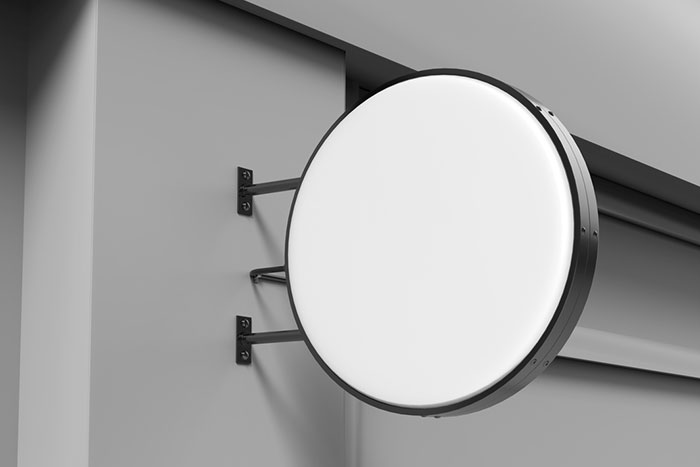Lighting is an incredibly powerful tool in the world of backlit advertising, capable of eliciting profound psychological responses from consumers. For successful signage and advertising, it’s essential to understand the nuances of how light shapes perceptions and behaviours.
Research has shown that the quality, intensity, and direction of light can significantly influence mood, emotions, and decision-making processes. Warm, soft lighting has been linked to feelings of comfort and relaxation, while bright, harsh lighting can create a sense of alertness and urgency.
By strategically leveraging lighting principles, advertisers can guide consumers towards desired actions and responses. Read on to find out more.
The Psychological Impact of Light
Light affects human emotions, cognition, and behaviour in various ways. Our brains are hardwired to respond to different lighting conditions, which can evoke specific feelings and reactions.
Some key psychological impacts of light include:
Mood and Atmosphere – Different lighting conditions can create different moods. As mentioned above, warm lighting often evokes feelings of comfort and relaxation, making it ideal for settings where a cosy, inviting atmosphere is desired. In contrast, cool lighting tends to be more energising and is often used in environments where alertness and activity are encouraged.
Attention and Focus – Bright, intense lighting can capture attention and improve focus, which is why it’s commonly used in retail environments to highlight products. In contrast, softer, dimmer lighting can create a more relaxed and contemplative atmosphere, which might be used in areas designed for leisure and browsing.
Perception and Judgment – Lighting can influence how we perceive colours, shapes, and textures. It can enhance the visual appeal of products, making them look more attractive and desirable.
Thoughtful lighting design can make even the most ordinary item appear premium and luxurious. Subtle shifts in brightness, colour temperature, and directionality can draw the eye to key features, highlight textures, and create a sense of depth and dimension.
Beyond aesthetics, the right lighting can also trigger subconscious associations that impact a shopper’s willingness to pay. Aligning these subtle cues with a brand’s desired positioning is crucial for driving perceived value and conversion.
Lighting Techniques to Captivate and Influence Customers
Advertisers and marketers use various lighting techniques to influence consumer behaviour.
Highlighting and Shadowing – Using light to highlight specific features of a product can draw attention to its most appealing aspects. Shadows can add depth and dimension, making the product appear more dynamic and interesting.
Colour Temperature – The colour temperature of light can evoke different emotional responses. Warm colours (yellow, orange) tend to create a sense of warmth and comfort, while cool colours (blue, white) can make a space feel more modern and sleek. Advertisers choose colour temperatures that align with the desired emotional response they want to elicit from consumers.
Light Intensity – The intensity of light can guide consumer focus. Bright lighting can attract attention to specific products or areas, while softer lighting can create a calming environment that encourages longer browsing.
Dynamic Lighting – Changing lighting conditions can create a sense of excitement and urgency. Flashing lights or changing colours can draw attention and create a vibrant environment that keeps consumers engaged.
Apple’s retail stores are renowned for their strategic use of lighting. The bright, cool lighting creates a modern, high-tech atmosphere that aligns with the brand’s image. Products are displayed under spotlights, making them stand out and appear more appealing!
Lighting Across Different Mediums
Thoughtful consideration of lighting is important when creating visually impactful advertising across various mediums. Each platform – whether print, digital, or outdoor – requires a specific approach to lighting to ensure your message resonates effectively.
In print, softer, more diffused lighting can create a sense of warmth and approachability. This works well for products or services targeting a more traditional audience. Conversely, sharper, directional lighting can lend an air of sophistication for upscale offerings.
For digital, lighting must account for the variability of screen brightness and viewing conditions. Bright, high-contrast lighting can cut through the visual noise of online environments. However, care must be taken to avoid overpowering the other design elements.
Outdoor advertising presents unique lighting challenges due to ambient conditions. Strategically placed spotlights and lightboxes can make key product shots or brand logos stand out, even in direct sunlight. Backlighting can also create a sense of depth and dimension.
By understanding how different lighting conditions affect emotions and perceptions, it can help to create more effective and engaging advertising and signage. Whether it’s highlighting a product, setting a mood, or guiding focus, strategic use of light can significantly enhance the consumer experience and drive sales.
If you’re interested in lightboxes or backlit signage, get in touch with Ausign today. As Melbourne’s trusted signage specialists, we can help with innovative solutions to make your business stand out. Ask us about lightboxes, shopfronts, banners, window frosting, car wraps, and traditional signwriting. Kew, Hawthorn, Richmond, Collingwood – we service all businesses all over Melbourne. Reach out to us today.


